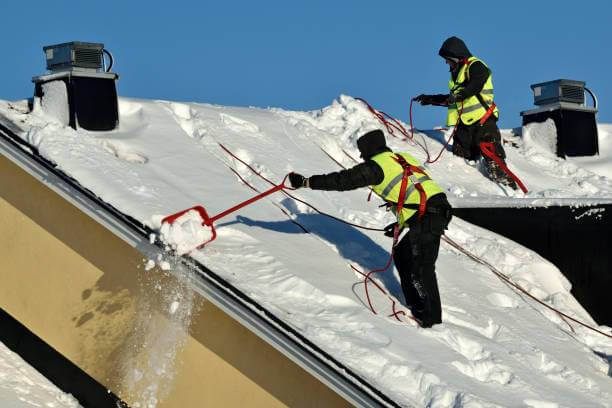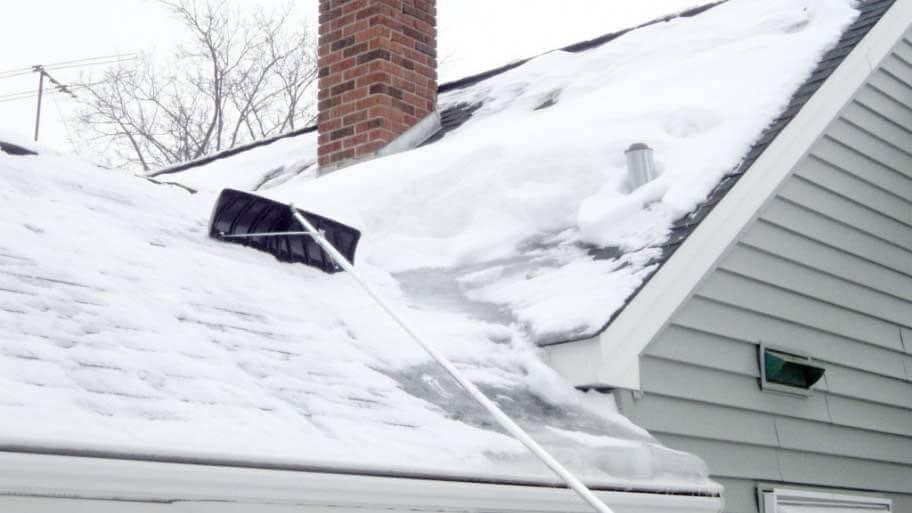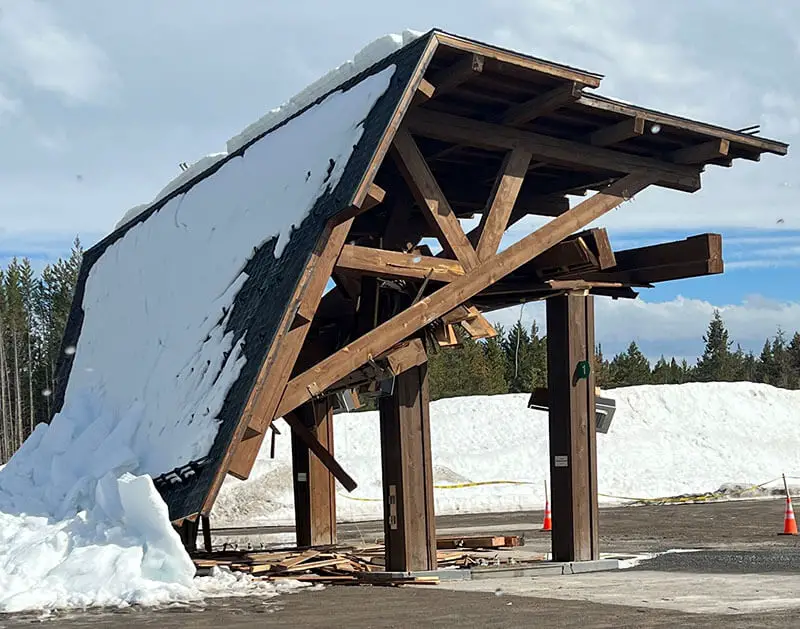Summer is the best condition for roofing work. Wheres, winter is off-season for it. But I still get many contracts in winter. It’s because the roofing cost is lower in the off-season. Many house owners like to take this advantage.
However, it’s okay to seek/provide roofing service during winter. But there will be some problems due to snowfall. You must know this whether you are a house owner or a roofer. Here I will talk about these problems and describe their possible solution.
Quick Jump
Comparing roofing work: Summer vs winter

Summer roofing and winter roofing have significant differences. Summer is the most suitable weather for roofing. There is no rain or snow to interrupt the roofer’s work. However, high temperatures can cause sweating and discomfort. But summer is a comparatively more comfortable time for roofing.
Winter is comparatively uncomfortable and challenging for roofing work. It’s because of low temperatures and snowfall. Wind and ice storms can also interrupt the roofing work.
From a house owner’s point of view, winter roofing is more affordable than summer roofing. Roofing companies get fewer contracts in winter. That’s why many house owners intend to grab this slot. Thus, they get the service at a lower price. Besides, the roofers can spend more time when there are fewer contracts. Thus, the house owner gets enough time to supervise the work himself.
How do roofers work in snowfall?
The challenges are almost the same if you compare rain and snowfall for roofers. However, it’s comparatively more suitable for roofers to work in winter than in monsoon. But the workload is higher in snowfall. I will explain why. Also, learn how roofers overcome it.
Problems of roofing in snowfall

Snowfall complicates the working environment for roofers. Besides, the workload increases as the roofer must remove the ice dam before roofing. Again, the risk of falls also increases because the snow makes the roof slippery. I am explaining them in detail.
- Time-consuming: Roofing work in snowfall is highly time-consuming. It’s because there will be consistent formation of ice dams. The roofer can’t work until they remove the ice dam. So, he must keep removing the dam and continue his job. That’s why the workload gets high when it’s snowfall. Thus, roofing work becomes time-consuming in snowfall.
- Challenging working environment: The working environment becomes tough because of low temperatures and snow. It’s too complicated for roofers to work when the temperature goes down to the freezing point. They can get frostbite if they work bare-handed. Besides, the snow keeps covering the roof, which makes the functional area difficult to access.
- Risk of fall: The low grip problem also exists in snowfall. Risk is even higher here due to the layering of the ice dam. The dam becomes fragile in several places due to changing weather. And it becomes so unpredictable that you can’t guess from where the dam can break. As a result, it becomes risky to walk through the roof. Even though you remove the ice, the roof will remain slippery. So, the risk of falling or slipping is high for roofers in snowfall.
Solutions

Roofer’s efficiency and safety depend on how smartly he handles the ice dam. Besides, some additional equipment can help him to overcome the difficulties the snowfall causes. Here is the explanation.
- Dam-removing methods: Roofers can remove ice dams with various methods. An expert roofer can remove them with a shovel. He can do it without damaging the shingles. But the safest way to remove the ice is to spread hot water through the roof. Thus, the dam melts and clears the roof. However, while the roofer applies hot water, ensure he doesn’t use a pressure hose pipe. Otherwise, hot water will penetrate inside and damage the shingles.
- Roofer’s safety: Necessary safety measures like a safety net or harness system are also crucial in snowfall. But additional equipment like special shoes or thermal clothing also helps. Thermal clothing keeps the roofer’s body warm and saves him from frostbite. Besides, spiky snow boots can prevent slipping on ice dams. Thus, he can gain some confidence to work on snowfall.
| Little Tip: You can install permanent heat cable technology. It helps to melt and remove the ice dam with minimum effort. However, roofing companies can install it. So, you should consider it. |
Frequently asked questions about winter roofing
What temperature is too cold for roofing?
A temperature under 4 ℃ or 40 ℉ is too cold for roofing. When the temperature falls under this, it starts forming snow. Snowfall begins when the temperature drops under 0 ℃ or 32 ℉. Thus roofing work becomes problematic when the temperature is too cold.
What is the best roof design for heavy snow?
The best roof design for heavy snow is the slate roof. It can provide a beautiful look and high strength as well. As solid and durable, it can bear heavy pressure and heavy weight of snow. Besides, this type of shingles is most suitable for slope roofing. So, snow extraction becomes easy when there is a slate roof.
What is the cheapest roof for snow?
Fiberglass asphalt shingle design is the most affordable roof for snow. It is also easy to arrange and install. Besides, this type of shingle has decent insulation properties. So, the room stays warm in the snow if the roof is made of fiberglass asphalt shingles.
Conclusion
Today’s post is about the problem of roofing in snowfall. I have also talked about how these problems can be reduced or eliminated.
If you are a house owner, you must check whether your roofer can work in winter. This post can help you to judge it. Here I have talked about the necessary equipment and technology for winter roofing.
You can learn about primary and additional safety measures for winter roofing from this post. If you are a newbie roofer, it will help you understand whether your roofing company provides it.
That’s all for today.
Cheers!

Roger Lewis is an experienced roof repair contractor with over 15 years of industry experience. He is known for his expertise in all aspects of roof repair, including leak detection, shingle replacement, and gutter repair.
